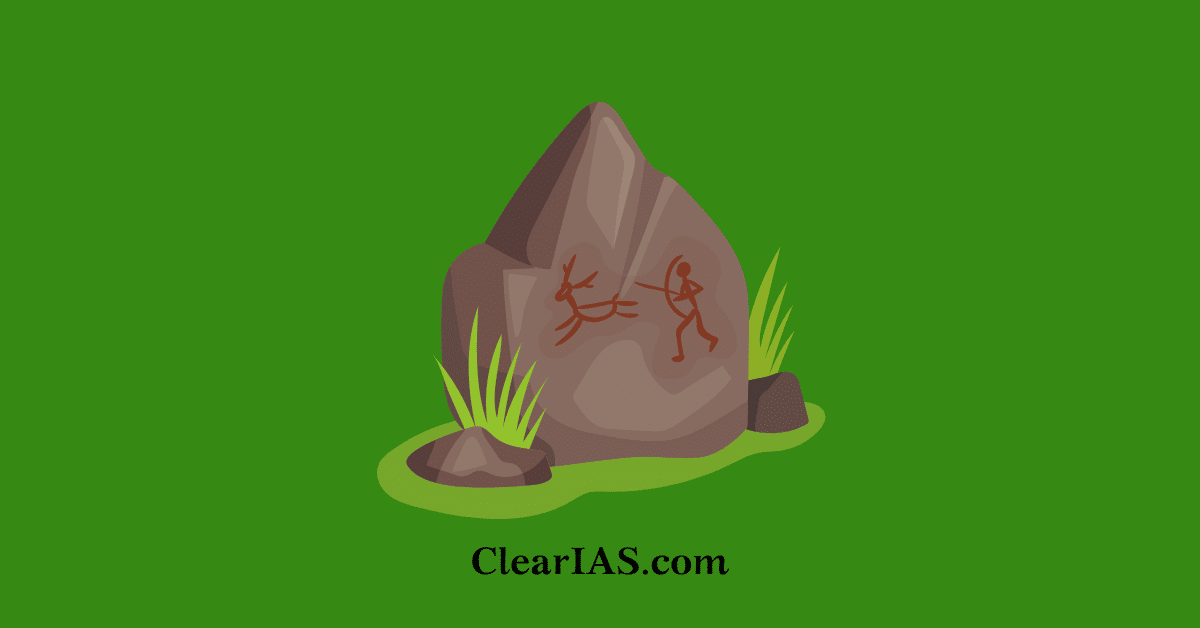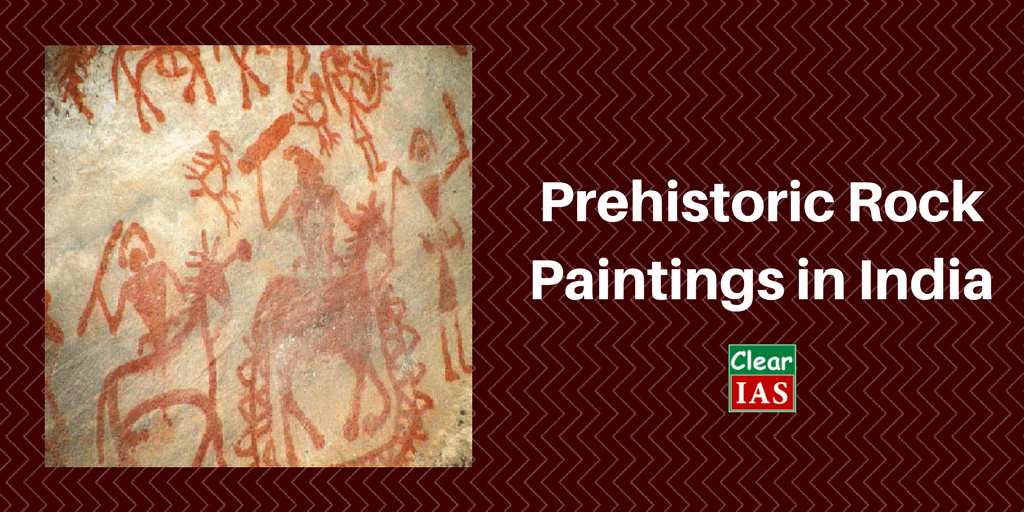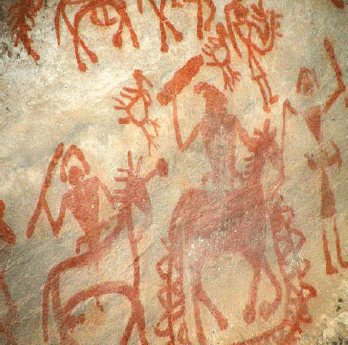
We suggest aspirants start from the book published by NCERT on Indian Culture and then move on to other online and offline sources. The book is titled ‘An Introduction to Indian Art’ – Part 1. Though many aspirants might not be aware, this textbook provides valuable knowledge for a beginner.
Clear IAS is starting a compilation of the important aspects of Indian culture based on the book ‘An Introduction to Indian Art’ – Part 1 so that aspirants can save time.
What’s Inside: An Introduction to Indian Art – Part 1
Note: Subscribe to the ClearIAS YouTube Channel to learn more.
This NCERT textbook for Class XI extensively covers the tradition of cave paintings in the pre-historic era and their continuation in mural paintings of Buddhist era and later on in various parts of the country, Buddhist, Jain, and Hindu sculptural and architectural developments. During the Indo-Islamic period and before the Mughal rule, another era dawned upon India, which saw massive constructions in the form of forts and palaces. Different aspects of all these styles have been discussed to introduce students with the fabric of India’s culture. The approach is mostly chronological, and it extends from the pre-historic period till the Mughals.
Prehistoric Rock Paintings in India

What is prehistoric?
- The distant past when there was no paper or language or the written word, and hence no books or written document, is called as the Prehistoric period.
- It was difficult to understand how Prehistoric people lived until scholars began excavations in Prehistoric sites.
- Piecing together of information deduced from old tools, habitat, bones of both animals and human beings and drawings on the cave walls scholars have constructed fairly accurate knowledge about what happened and how people lived in prehistoric times.
- Paintings and drawings were the oldest art forms practiced by human beings to express themselves using the cave wall as their canvas.
Prehistoric Period: Paleolithic Age, Mesolithic Age, and Chalcolithic Age
The drawings and paintings can be catagorised into seven historical periods. Period I, Upper Palaeolithic; Period II, Mesolithic; and Period III, Chalcolithic. After Period III there are four successive periods. But we will confine ourselves here only to the first three phases. Prehistoric Era art denotes the art (mainly rock paintings) during Paleolithic Age, Mesolithic Age and Chalcolithic Age.
(1) Paleolithic Age Art
- The prehistoric period in the early development of human beings is commonly known as the ‘Old Stone Age’ or ‘Palaeolithic Age’.
- The Paleolithic period can be divided into three phases:
(1) Lower Palaeolithic (2.5 million years-100,000 years ago)
(2) Middle Palaeolithic (300,000-30,000 years ago)
(3) Upper Palaeolithic (40,000-10,000 years ago) - We did not get any evidence of paintings from lower or middle paleolithic age yet.
- In the Upper Palaeolithic period, we see a proliferation of artistic activities.
- Subjects of early works confined to simple human figures, human activities, geometric designs, and symbols.
- First discovery of rock paintings in the world was made in India (1867-68) by an Archaeologist, Archibold Carlleyle, twelve years before the discovery of Altamira in Spain (site of oldest rock paintings in the world).
- In India, remnants of rock paintings have been found on the walls of caves situated in several districts of Madhya Pradesh, Uttar Pradesh, Andhra Pradesh, Telangana, Karnataka, Bihar, and Uttarakhand.
- Some of the examples of sites early rock paintings are Lakhudiyar in Uttarakhand, Kupgallu in Telangana, Piklihal and Tekkalkotta in Karnataka, Bhimbetka and Jogimara in Madhya Pradesh etc.
- Paintings found here can be divided into three categories: Man, Animal, and Geometric symbols.
- Some of the characteristics of these early paintings are:
- Human beings are represented in a stick-like form.
- A long-snouted animal, a fox, a multi-legged lizard are main animal motifs in the early paintings (later many animals were drawn).
- Wavy lines, rectangular filled geometric designs and a group of dots also can be seen.
- Superimposition of paintings – earliest is Black, then red and later White.
- In the late historic, early historic and Neolithic period the subjects of paintings developed and figures like Bulls, Elephants, Sambhars, Gazelles, Sheep, Horses, styled human beings, tridents and rarely vegetal motifs began to see.
- The richest paintings are reported from Vindhya range of Madhya Pradesh and their Kaimurean extension into U.P.
- These hills are fully Palaeolithic and Mesolithic remains.
- There are two major sites of excellent prehistoric paintings in India:
(1) Bhimbetka Caves, Foothills of Vindhya, Madhya Pradesh.
(2) Jogimara caves, Amarnath, Madhya Pradesh.
Bhimbetka Caves

- Continuous occupation of the caves from 100,000 B.C– 1000 A.D
- Thus, it is considered as an evidence of long cultural continuity.
- It was discovered in 1957-58.
- Consists of nearly 400 painted rock shelters in five clusters.
- One of the oldest paintings in India and the world (Upper paleolithic).
The features of paintings of three different phases are as follows (even though Bhimbetka contains many paintings of periods later, different from what is explained below, as we are dealing with the prehistoric period only, we are concluding by these three):
Upper Palaeolithic Period:
- Paintings are linear representations, in green and dark red, of huge animal figures, such as Bisons, Tigers, Elephants, Rhinos and Boars beside stick-like human figures.
- Mostly they are filled with geometric patterns.
- Green paintings are of dances and red ones of hunters.
(2) Mesolithic period Art:
- The largest number of paintings belongs to this period.
- Themes multiply but the paintings are small in size.
- Hunting scenes predominate
- Hunters in groups armed with barbed spears pointed sticks, arrows, and bows.
- Trap and snares used to catch animals can be seen in some paintings.
- Mesolithic people loved to point animals.
- In some pictures, animals are chasing men and in others, they are being chased by hunter men.
- Animals painted in a naturalistic style and humans were depicted in a stylistic manner.
- Women are painted both in nude and clothed.
- Young and old equally find places in paintings.
- Community dances provide a common theme.
- Sort of family life can be seen in some paintings (woman, man, and children).
(3) Chalcolithic period Art:
- Copper age art.
- The paintings of this period reveal the association, contact and mutual exchange of requirements of the cave dwellers of this area with settled agricultural communities of the Malwa Plateau.
- Pottery and metal tools can be seen in paintings.
- Similarities with rock paintings: Common motifs (designs/patterns like cross-hatched squares, lattices etc)
- The difference with rock paintings: Vividness and vitality of older periods disappear from these paintings.
Some of the general features of Prehistoric paintings (based on the study of Bhimbetka paintings)
- Used colours, including various shades of white, yellow, orange, red ochre, purple, brown, green and black.
- But white and red were their favourite.
- The paints used by these people were made by grinding various coloured rocks.
- They got red from haematite (Geru in India).
- Green prepared from a green coloured rock called Chalcedony.
- White was probably from Limestone.
- Some sticky substances such as animal fat or gum or resin from trees may be used while mixing rock powder with water.
- Brushes were made of plant fiber.
- It is believed that these colours remained thousands of years because of the chemical reaction of the oxide present on the surface of rocks.
- Paintings were found both from occupied and unoccupied caves.
- It means that these paintings were sometimes used also as some sort of signals, warnings etc.
- Many rock art sites of the new painting are painted on top of an older painting.
- In Bhimbetka, we can see nearly 20 layers of paintings, one on top of another.
- It shows the gradual development of the human being from period to period.
- The symbolism is inspiration from nature along with slight spirituality.
- Expression of ideas through very few drawings (representation of men by the stick like drawings).
- Use of many geometrical patterns.
- Scenes were mainly hunting and economic and social life of people.
- The figure of flora, fauna, human, mythical creatures, carts, chariots etc can be seen.
- More importance for red and white colours.
Compiled by: Jijo Sudarshan






Very valuable
Please give advice on how many questions we can attempt safely in cs preliminary2015 GS paper since CSAT is only a qualifying one.
65 to 70 would be good enough without negatives.
Seriously! this helps a lot.. thanks a lot
jogimara is in Chhatisgarh. So plz give right details…
Seriously! this helps me a lot.. thanks a lot..!!!! Ambadnya
from which site i can download Introduction to Indian Art – PartI book
mesolithic people loved to paint animals not point as mentioned above
Thanku sir…it’s very useful for us…good compilation…
thanks
very nice answer that influenced me a lot
It said that the first discovery of rock painting was in 1967-68, but then later said bhimbetka cave was discovered in 1957-58, which crontradict the first statement. Am i misunderstanding, can anyone explain?
First painting was discovered in 1867-68 not in 1967, read the above details again.. Make sense now?
The first discovery of rock paintings in the world was made in India by archaeologist Archibald Carlleyle in 1867 – 68 (in Sohagighat, Mirzapur District, Uttar Pradesh).
First painting was discovered in 1867-68 not in 1967, read the above details again.. Make sense now?
Hello Sir/Madam, ” JOGIMARA CAVE PAINTINGS ” are in CHATTISGARH (NOT IN MADHYA PRADESH) Plz do edit…